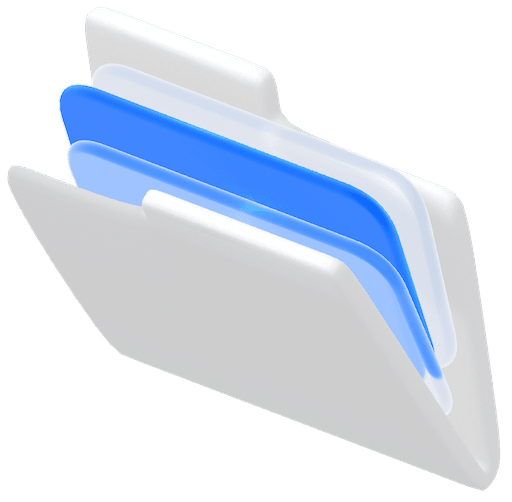IT Recruiter:
Modern Recruitment +
Technical Competence
Skyrocket your IT Recruiter career. Spend 100 hours on educating - save 10000+ working hours in the future!
Start: 15. September
Format: online
ABOUT OUR COURSE
At the end of the training, you will determine how software products are created and differentiate nuances in IT roles. You will confidently use IT terminology and proficiently conduct an effective recruitment process by using modern sourcing methods, digital solutions, recruitment software, and artificial intelligence. You will apply a systematic approach by focusing on the candidate experience, data collection, and analysis.
100 academic hours
59 hours of auditory work with the teacher and mentor (including 26 hours of practical work) and 41 hours of independent study.
18 educational modules
35 pre-recorded video lessons in Modern Recruitment and 47 in Technical Competence.
9 weeks of practice
If you're a newbie, get help with job search. If you are a recruiter, get help to fill your vacancies.
18 bonuses to win
17 great bonus video lessons and sourcing library to win if you pass the assessments.
11 live meetings with speakers and experts
Each one is 2 academic hours, with answers to all your questions and support from the mentors.
More than 30 useful files and manuals
17-page IT Knowledge Base + IT Mind Maps + Recruiter’s Toolkit to work on a daily basis.
Who are these courses for?
Wanna-be recruiters and fresh recruiters who are eager to master IT recruitment from the scratch or quickly advance their skills.
HR professionals looking to become more valuable assets in IT companies by acquiring effective recruitment skills.
Experienced recruiters aiming for better outcomes, adopting modern methods, working systematically, faster, and more efficiently.
Professionals in the IT industry who are involved in hiring IT personnel, seeking to understand IT terminology and become reliable partners for their teams.
Team leaders and hiring managers aiming to proficiently oversee IT teams, communicate effectively, and understand candidate motivations.

Learning outcomes
You will expertly plan a targeted search strategy and confidently manage the hiring process by showcasing advanced digital skills, using recruitment software, digital applications, and AI.
You will find candidates in databases and on social media by creating Boolean Search and Google X-Ray sourcing queries and automating targeted searches using search engines and Chrome extensions.
You will comprehend the principles of digital data management in accordance with GDPR to ensure the confidentiality of candidate personal data and compliance with data protection requirements.
You will explain how to enhance your performance by monitoring recruitment process metrics and analyzing recruitment process data.
You will define your responsibilities in the recruiter role and apply principles of a candidate-centric approach to ensure a high-quality candidate experience.
You will clearly distinguish the structure of a software product lifecycle, identifying the crucial roles at each stage of software development and offering insightful analyses of their significance.
You will easily find understandable explanations of IT terminology, either on your own or with the help of AI, demonstrating the ability to enhance technical competencies as an IT recruiter.
You will define programming languages, frameworks, and other technologies and methodologies, explaining why they are used.
You will confidently engage in conversations with IT teams and expertly analyze nuances regarding the product, technologies, team structure, and development processes in a project.
You will thoughtfully reflect on your role and responsibilities as an IT recruiter.
AS A RESULT, YOU GET:

AS A RESULT, YOU GET:
Certificate
Awarded to a student who has attended 70% of the lessons, completed 70% of the assignments, and successfully passed the final test.
IT Knowledge Base + IT Mind Maps
17 tables and a vocabulary, constantly updated with the latest information. Maps with overview of IT roles and relationships in the IT world.
Recruiter's Toolkit
Lots of templates and manuals to work on a daily basis.
Hands-on experience
We work on your vacancy together throughout the course.
Access to the community
Group communication and access to live broadcasts with IT professionals.
Support in finding a job
81% of the course participants, who are looking for a job, get job offers during the course or right after the graduation.
Our students work here
The results of our students

English teacher
From English teacher
Ira worked as an English teacher and was severely burned out in the Covid.
To IT Recruiter
Ira became one of the winners of the course, winning free tuition at the next level. She overcame all of her fears and found her first job as an IT Recruiter.
Review
Julia Jolkin, Alina Kutlugalina, and Ekaterina Krivich gently guided me from zero to hero. Looking forward to the next course with you!

Junior IT Recruiter
From Junior
Maris came to recruitment from commerce. She was promoted to junior IT recruiter and felt the need to pump up her technical competencies.
To Recruitment Business Partner
Within six months, Maris had gone through all of our training steps. She graduated as a winner two of the steps as a top student. As a result, Maris was promoted to Recruitment Business Partner and lit up her entire team, including the company's CTO.
Review
From the beginning of this year I have taken part of all the #ittalent courses. I can see how I have grown and how much my approach to challenges has changed. It's been an amazing ride and I am very grateful to all of the teachers, not just for the theoretical part but also for the personal experience they shared.

Recruiter
From Recruiter
Amanda worked for a rapidly growing company with a rare chance of the same rapid career advancement for herself.
To Global Talent Acquisition Manager
Now Amanda is a confident Global Talent Acquisition Manager at an unicorn company. She has completed all stages of our training and leads a team of recruiters from several countries.
Review
Thanks to our talented teachers Julia Jolkin, Alina Kutlugalina and Jelena Laudver. It was an amazing experience not only to learn the newest trends in recruitment but also to get to know such amazing study mates - recruitment professionals.

Stewardess
From Stewardess
Olga was a stewardess, married a pilot and had 2 wonderful boys. She joined the course in November 2021 with the help of a European fund.
To IT Recruitment Specialist
After the first part of the course, Olga got her first recruitment job in an agency. She is working with different vacancies: from pharmaceutical jobs to IT roles. She won the second course and joined the Technical competence group in January 2022.
Review
It was mind-blowing! The whole new universe of IT opened up for me with help of Julia Jolkin and Ekaterina Krivich. These ladies are rocking! My world will never be the same. Now let's get back to hard work. I'm gonna head-hunt you!

Stay-at-Home Mom
From Stay-at-Home Mom
Kaidi, a stay-at-home mom, desired a new career in IT recruitment. With no prior experience, she doubted her abilities to succeed.
To IT Recruiter
Through IT Talent Academy courses, Kaidi overcame self-doubt, embraced flexibility, and discovered remote opportunities. Now, she thrives as a skilled IT recruiter, understanding candidates' needs.
Review
I had been a stay-at-home mum for the past 5 years, completely away from HR and work life in general. So the circumstances were far from perfect. But I didn't give up. And It was because I began to feel that my teachers saw value in me. It's amazing how far you are willing to go when someone believes in you.

Freelance Marketing Manager
From Aspiring Newbie
Polina, a beginner, sought a meaningful career in recruitment but lacked experience and a strong network.
To Inspiring Recruiter
Through the IT Talent Academy's Modern Recruitment, Technical Competence, and Advanced Recruitment courses, Polina blossomed into an inspiring recruiter and joined Apollo.
Review
One thing I loved about this course was not just gaining practical knowledge about automation tools that can make building and managing candidate pools and reaching out ten times faster, but also experiencing a mindset shift.

Full-Time Mom
From Full-Time Mom
Alesja lacked the knowledge and experience to work as a recruiter. She decided to get the necessary skills at the IT Talent Academy courses.
To Recruiter in 5 Months
The IT Recruiter course helped Alesja to prove herself as a recruiter, despite having little experience in this field. As a result, she got a position as a recruiter at DPD.
Review
It’s been challenging, interesting, eye opening and mind blowing course, and I’m so proud of myself I made it until here. Juggling between being full time mom of a toddler, job search, interviews and test assignments, working on the business case and study is not easy. But I made it!

Career Advisor
From Career Advisor
Mariyam, a career advisor from Kazakhstan, moved to Estonia and decided to pursue a career as an IT recruiter, despite having no prior experience or knowledge of the subject.
To Technical Sourcer in 5 Months
With 3 IT Talent Academy certificates in a row, Mariyam landed a job as a Technical Sourcer at Wise, impressing interviewers with her knowledge of recruitment automation.
Review
Thanks for the brilliant professionals at IT Talent Estonia especially Julia Jolkin 👠👠 and Alina Kutlugalina. My life credo is to learn from the best, and they are the best in technical recruiting for sure.

Unemployed
From Unemployed
Valeria lost her job and felt uncertain about her future.
To People Partner in 3 Months
Valeria started to learn IT recruitment, and within a month, she found a new job as People Partner at DomeStack. Training helped her solidify her skills and gain confidence in her new profession.
Review
2 months of the course behind my back, and my life has already turned 180 degrees. Fantastic result!

Head of Human Resources
From Maternity Leave
Kedi wanted to acquire internationally transferable skills and get a new career direction.
To Talent Acquisition Partner
Kedi successfully graduated from the IT Talent Academy, securing her dream job as a Talent Acquisition Partner at Genius Sports.
Review
If you are seeking to broaden your horizons and expand your professional capabilities, I highly recommend this incredible course.
HOW TO BECOME AN IT RECRUITER
IN 3 MONTHS

Assess your fit for the IT Recruiter role and get clear, step-by-step instructions for starting, switching, or advancing in your career.
We've helped hundreds succeed in IT recruitment.
Now it's YOUR turn!
By clicking the button, you agree to receive our latest news as well

Our speakers
Course program
Part 1. Module 1. Recruitment competencies & fundamentals
Curriculum group:
0413 Management and administration and
0688 Interdisciplinary study field of information and communication technology curriculum groups.You will learn:
Myths and reality of the recruiter profession.
What competencies should a successful and productive recruiter have?
What roles are there in recruitment? Recruiter’s career path.
Recruitment Life Cycle. What are the phases and basic concepts of systemic recruitment?
How to build effective cooperation between in-house and agency.
How to save a candidate's personal information in accordance with GDPR law rules.
How to choose a suitable candidate management platform for a smooth recruitment process.
Module outcomes:
You will eliminate all doubts and questions about the profession.
Pencil down what competencies and skills you already possess and need to master.
Understand what role in the recruitment department suits you the best.
Make a career growth roadmap.
You will know the principles of systematic recruitment and be able to apply them.
You’ll understand the nuances of storing personal data according to GDPR and choosing a candidate management platform for conducting the recruitment process.
Takeaways:
Related additional materials, articles and videos.
Step-by-step Guide From Zero to Hero. A Successful Recruitment Career Path.
Bonus:
How To Lesson: How to polish your LinkedIn.
Part 1. Module 2. Preparing for the search. Intake meeting & talent mapping
You will learn:
- How to prepare for the search.
- How to conduct an effective intake meeting with a hiring manager?
- Talent mapping: how to get 80% of the results with 20% of the effort.
- How to prepare for sourcing.
- How to build a strategy, select channels and make a step-by-step search plan.
- How to edit Google settings for productive sourcing.
- Which plugins and useful tools to install in Chrome.
- LinkedIn subscriptions. What is the difference between LinkedIn Premium, Recruiter Lite, Sales Navigator.
Module outcomes:
- You’ll be able to have a dialogue with the hiring manager and take a detailed job description for the role that will ensure the success of the search.
- You will be able to analyse the candidate market and make competent talent mapping.
- You’ll know how to make a step-by-step plan for a targeted search for a specialist.
- You will prepare for sourcing
- You will adjust Google and browser settings
- You will learn how to be more productive with the help of free Chrome extensions.
Takeaways:
- Related additional materials and articles.
- IT Talent Intake meeting questions.
- Intake meeting Checklists.
- Step-by-step Search Plan from IT Talent.
- Candidate Sourcing Funnel and Output Calculator by Glen Cathey.
Bonus:
- PRO Lesson. How to establish productive cooperation with a recruitment agency.
Part 1. Module 3. Boolean Search. Sourcing on LinkedIn
You will learn:
- How to search effectively on LinkedIn. Boolean operators on LinkedIn.
- What additional features does LinkedIn have for a more accurate search?
- How to search even more effectively on LinkedIn.
- How to bypass LinkedIn restrictions and find even more suitable candidates.
- How to easily and effortlessly build more complex combinations of Boolean operators on Linkedin.
- How to turn your email list into contacts on LinkedIn.
- What plugins and useful tools in Chrome will help you work with LinkedIn.
- How to quickly find additional information about a candidate and their contact details.
- What are the possibilities of searching and automating the search for candidates on job boards?
Module outcomes:
- You’ll use the basic Boolean search operators.
- You can search for candidates for any profile on LinkedIn.
- You will be able to find the most suitable candidates using the Boolean search operator.
- You’ll take the maximum from the search in the databases of candidates.
- You’ll know how to use additional LinkedIn search options and filters to filter out inappropriate profiles and spend less time searching.
- You will be able to use Boolean search operators more productively and bypass LinkedIn restrictions to find much more suitable candidates.
- You will operate with useful tools - Chrome plugins that will allow you to work more efficiently and significantly save time and effort at the search stage.
- You’ll know how to grow your network of contacts on LinkedIn faster.
- You’ll hone your speed and "smart" search skills to automatism.
Takeaways:
- Related additional materials, articles and videos.
- LinkedIn advanced search strings generator “Boolean Limit Workaround Search Builder” from Irina Shamaeva.
Bonus:
- How To Lesson: How to avoid and escape LinkedIn Jail.
Part 1. Module 4. Sourcing in Google. Google X-Ray
You will learn:
- How to search candidates in Google using Google X-ray operators.
- How to find even more candidate profiles on Linkedin using Google X-ray operators.
- What alternative channels for finding candidates outside of Linkedin are used for sourcing?
- How Google X-ray operators help you find resumes and portfolios on the Internet.
- How to automate the composing of search queries for sourcing using automated query generators.
- What are the free platforms and plugins for fast and efficient sourcing?
- How to find contacts of candidates on the internet.
Module outcomes:
- You’ll be able to find even more candidate profiles on Linkedin using the Google X-Ray search operators.
- You’ll discover even more candidates outside of LinkedIn with Google's X-Ray search.
- You’ll master various creative approaches in the search and find resources available to a limited number of recruiters.
- You’ll be able to automate the composing of search queries for sourcing using generators.
- You’ll know how to find the contact details of candidates and contact them directly.
Takeaways:
- Related additional materials, articles and videos.
- Search query generator for searching Linkedin, Github, Dribble, Xing, and Twitter.
Bonus:
- Sourcing Templates Library.
Part 1. Module 5. Job posting on social media. Engaging candidates into the recruitment process
You will learn:
- When and in what channels is it better to post vacancies?
- What channels are the best for reaching out to candidates?
- How to create a personalized pitch and letters that are sure to be answered.
- How to plan the follow-up process.
- How to create email templates to save time while emailing candidates.
- How to track the effectiveness of mailings and measure and analyze open and reply rates.
- How to build email campaigns using automation.
Module outcomes:
- You will write letters that candidates always respond to.
- You will be able to save time using templates and modern mailing tools.
- You will be able to use modern online tools for effective communication with candidates.
- You will learn how to monitor its effectiveness.
- You will spend less time emailing and be more productive.
Takeaways:
- Related additional materials, articles.
- Step-by-step Search Plan from IT Talent.
- The job description questions checklist.
Bonus:
- PRO Lesson. How to work with your email like a PRO.
Part 1. Module 6. Сonducting interviews and selecting candidates
You will learn:
- How to conduct pre-screening interviews to interest the suitable candidates and filter out the unsuitable ones.
- What types of interviews exist and how to choose the right type?
- How to evaluate hard skills & soft skills.
- What criteria are used to select candidates, and draw up a candidate scorecard (scorecard).
- Where and how to interview. The best digital solutions and technical hacks for a successful online interview.
Module outcomes:
- You will be able to use various solutions for conducting online and offline interviews.
- You’ll know how to make the right choice in interview methods that are appropriate for your job.
- You’ll be able to systematise the process of evaluation and selection of candidates. You will reach common ground with the team.
- You will be able to draw up a scorecard and systematise the assessment of the suitability of candidates for the position.
Takeaways:
- Related additional materials, articles and videos.
- Scorecard template.
- Pre-screening question template.
Bonus
- PRO Lesson. How to make the recruitment process Agile.
Part 1. Module 7. The final stage of the process. Selecting and hiring the candidates
You will learn:
- How to use psychological testing in selection. Popular testing methods.
- How to give high-quality feedback to candidates and reject them politely.
- How to build and maintain relationships with candidates, even after rejection.
- Candidate experience: why and how to measure the candidate's impression of the process.
- How to ensure a good impression of the candidate during the selection process, regardless of the outcome of the competition.
- How to motivate a candidate, and influence the decision to accept a job offer.
- How to deal with rejections and counter offers.
- How to inspire a candidate for relocation and help overcome fears.
Module outcomes:
- You will understand the importance of and learn how to correctly check the recommendations of the candidate.
- You will learn how to deal with objections and bring the offer to acceptance.
- You will be able to remain on good terms with the candidate, even after the rejection.
- You will be able to create pleasant impressions and a positive attitude towards the company in the candidate, even if he did not apply for the vacancy.
- You will learn to analyse the candidate's impression of the process and identify weaknesses in the hiring process.
Takeaways:
- Related additional materials, articles and videos.
Bonus:
- PRO Lesson. How to grow your LinkedIn network on steroids.
Part 1. Module 8. Onboarding. Finishing the recruitment cycle. Reflecting on results
You will learn:
- How to complete the recruitment cycle.
- How to analyse the process and results.
- How to save search results for the future.
- Why is onboarding so important and what does it affect?
- How to successfully onboard a new employee.
Module outcomes:
- You will be able to design a productive Onboarding plan.
- You will be able to collect data and analyze recruitment metrics.
- You’ll know how to properly save the results of the process in order to be able to return to the candidates with another proposal.
- You’ll be able to repeat this path many more times in your work, using the saved developments.
- You will make a plan for future learning and career development.
Takeaways:
- Related additional materials, articles and videos.
- Recommendations for additional materials: blogs, videos, articles and books.
Bonus:
- How to use an AI assistant in recruitment?
Part 2. Module 1. Software Development Life Сycle. The first stage – planning. Hiring analysts
Curriculum group: 068 Interdisciplinary study field of information and communication technology.
You will learn:
- Technical competence. What do you need to know and why?
- What does a company’s HR or IT recruiter definitely need to be competent in?
- How are software products created and developed?
- How is a Software Development Life Cycle built and what are the roles of each stage?
- What happens during the first planning stage?
- How to recruit analysts?
Module outcomes:
- You will learn to research any IT terminology and find answers independently.
- You will understand how products are born and made.
- You will know the logical connection between product development stages and IT roles in each stage.
- You will see in which market sector is your company positioned, its type, and in which development stage is your company’s product.
- You will learn to distinguish such terms as product roadmap, В2В, В2C, scaleup, start-up, product roadmap, feasibility study etc.
- You will know the difference between the BI Analyst and Business Analyst.
Takeaways:
- Additional reading and watching materials for the lesson.
- IT Knowledge Base: SDLC
- Mind Map Software Development Life Cycle (SDLC).
- Mind Map Types of Products and Companies.
- IT Role Job Order Checklist.
- Job Description Template.
- Channels for researching IT terms.
- GlossaryTech Chrome extension, other useful plugins.
Bonus:
- HOW TO Lesson. How IT specialists are looking for information?
Part 2. Module 2. The second stage of SDLC - design and architecture. How to hire designers, architects and product specialists
You will learn:
- What are the product development stages from prototyping to launch?
- Which roles exist in product development management? What is the difference between a РM, РO and the Product Manager?
- How is a product design created? The differences between UX, UI and graphic design.
- What are the nuances of architecture roles?
Module outcomes:
- You will be able to easily differentiate and analyse the nuances of UX, UI, product designer and graphic designer vacancies and profiles.
- You will be easily able to differentiate the vacancies and profiles of a Product Owner and Product Manager, and ask them correct questions at the interview.
- You will understand the differences between different types of architects.
- You will understand such terms as MVР, wireframe, layout, mock-up, launch.
Takeaways:
- Additional articles and videos on the subject.
- IT Knowledge Base: Designers, Architects, Testers (QA).
- IT Knowledge Base: Managers.
- Chart: PM vs PO vs BA.
Bonus:
- PRO Lesson. How to find designers?
Part 2. Module 3. Teamwork and processes. How do they do it? Top management roles in IT companies
You will learn:
- The differences between the methodologies: Waterfall and Agile.
- What is the difference between Scrum and Kanban?
- What are Scrum “rituals”?
- The tools used by tech teams for cooperation: JIRA, Confluence, Trello.
- Different types of teams by function types.
- The differences between monolith and microservices architecture.
- How to differentiate the nuances of management roles: VР of Engineering, Engineering Manager, CTO, Team Lead?
Module outcomes:
- You will understand how your team is structured.
- You will see which methodology your team uses in its work.
- You will know which Scrum “rituals” are implemented in your team.
- You’ll find out how Agile is your team.
- You will understand such terms as sprint, release, stand up, ticket, backlog, retrospective.
- You will be able to analyse vacancies and resumes of management roles of an IT company.
Takeaways:
- Additional articles and videos on the subject.
- IT Knowledge Base: Managers.
- IT Knowledge Base: Tops.
- IT Talent's intake meeting questions.
- Software Development Methodologies Mind Map.
- Scrum Process Mind Map.
Bonus:
- PRO Lesson. How to use an AI assistant in learning technical competence?
Part 2. Module 4. The third stage of Software Development Life Cycle — program. How to hire frontend developers
You will learn:
- The difference between fullstack, frontend and backend developers.
- What are the base technologies used in the work of frontend developers?
- What are frameworks and why are they needed?
- Which Javascript frameworks are most popular: React, VueJS, Angular?
- How are HTML and CSS used?
- What are Adaptive and Responsive design?
- How do designers and frontend developers cooperate?
- What is the difference between React and React Native?
- Using Javascript programming language in backend. NodeJS and Typescript.
Module outcomes:
- You will understand the difference between frontend, backend and fullstack.
- You will know what frameworks are and why they are used in development.
- You will learn the nuances of frontend roles and will be able to understand developer terminology.
- You will understand the intricacies of frontend vacancies and profiles, and the differences of frontend frameworks.
- You will find out how the Javascript programming language is used in both frontend and backend development.
- You will be able to ask the correct clarifying questions during the interview.
- You will understand such terms as fullstack, responsive, adaptive, mobile-first paradigm.
Takeaways:
- Frontend Technologies Mind Map.
- Additional articles and videos on the subject.
- IT Knowledge Base: Developers.
Bonus:
- PRO Lesson. All you need to know about GitHub.
Part 2. Module 5. Backend. Part I. How to hire backend developers and database specialists
You will learn:
Why do you need to know the project’s tech stack?
What are the important terms of backend development?
How do frontend, backend and databases work together?
What are the differences between object-oriented and functional programming languages?
Which connections between programming languages allow one to quickly switch from one language to another?
Using Javascript programming language in backend. Javascript (+Typescript).
What are the existing popular object oriented programming languages (OOР)? Let’s talk about Java, C#, Ruby, Go (GoLang), РHР, Python.
Which projects use such functional programming languages (FР) as Elixir, Scala.
What are the popular frameworks for backend: Spring, Rails, Django, .NET?
What databases are there, and what are the nuances of database specialist vacancies?
Outcomes:
You will understand how programmers work and why they must not be distracted from their work process.
You’ll be able to differentiate between the programming languages, frameworks and other technologies used in backend development.
You will understand what types of projects use the above-mentioned programming languages.
You will realize how programmers can quickly switch to another programming language.
You will be able to differentiate relational and non-relational databases.
You will know the difference between the roles of a Database Administrator and a Database Engineer.
You will understand such terms as ETL, AРI, Github, OOР, code review.
You will feel confident asking and answering candidate questions.
Takeaways:
Additional articles and videos on the subject.
Development Mind Map.
IT Knowledge Base: Developers.
IT Knowledge Base: Database.
Job description questions.
Bonus:
PRO Lesson. How to source candidates on GitHub.
Part 2. Module 6. Backend. Part II. The fourth stage of Software Development Life Cycle - testing. How to hire backend, mobile, embedded developers and QA specialists
You will learn:
- What is the C/C++ programming language used for and what is embedded development?
- What technologies are used in mobile development?
- What are the differences between native and cross-platform apps?
- Mobile development technologies: Android, Kotlin, iOS (Swift, Objective-C), React Native, Flutter.
- What type of mobile developers are there?
- Testing stage: what? why? how?
- The roles of QA: manual testing, automation, SDET.
Outcomes:
- You will study the nuances of professional roles in mobile development.
- You’ll be able to understand the nuances of testing-related vacancies.
- You will know the terms often used in vacancy descriptions such as highload, scalability, vulnerability, clean code.
- You will be able to speak the same language as the development team.
- You will clearly determine the developer’s experience by looking at their profile.
- You will confidently navigate in development vacancy descriptions.
Takeaways:
- Additional articles and videos on the subject.
- Development Mind Map.
- Testing Mind Map.
- IT Knowledge base: Developers.
- IT Knowledge base: Testing.
Bonus:
- PRO Lesson. How to find the contacts of the candidates you found on Github.
Part 2. Module 7. The fifth stage of Software Development Lifecycle - deployment. How to hire DevOps, SRE Engineers and Infrastructure Engineers
You will learn:
- Difference between DevOps, TechOps and SRE.
- Code deployment, containerisation and app container orchestrating.
- What are the differences between Infrastructure Engineer, System Administrator and Network Administrator roles?
- Support specialists. Difference between Level 1, Level 2 and Level 3 support.
- How is data analysis done?
- What instruments are used for data visualisation? BI and Data analytics.
- How to select Data Science specialists? Machine learning.
- What are the security roles? Security specialists.
Outcomes:
- You will learn the difference between deploy and release.
- You will know the difference between containerization and orchestration.
- You will understand the difference between SRE, Devops Engineer, Infrastructure Engineer.
Takeaways:
- Additional articles and videos on the subject.
- IT Knowledge Base: Deploy.
- Mindmap: DevOps.
Bonus
- HOW TO Lesson. How to reach out to IT candidates.
Part 2. Module 8. The sixth stage of Software Development Lifecycle - maintenance. How to hire maintenance, support and security specialists
You will learn:
- What is the maintenance stage of SDLC about?
- What roles are involved in the maintenance stage?
- What is the difference between a system and a network?
- What is the difference between a system engineer and a system administrator?
- Support specialists. Difference between Level 1, Level 2 and Level 3 support.
- Why should a company hire Security Specialists?
- What are the security roles? Security specialists.
Module outcomes:
- You will learn what the maintenance stage of SDLC is and what roles are involved.
- You will learn the difference between System and Network Engineers and Administrators.
- You will know about all types of support and the difference between support specialists of Level 1, Level 2 and Level 3.
- You will understand the difference between security roles and their responsibilities.
Takeaways:
- Additional articles and videos on the subject.
- IT Knowledge Base: Deploy and maintenance.
- IT Knowledge Base: Support levels.
- IT Knowledge Base: Cyber Security.
Bonus:
Part 2. Module 9. The final stage Software Development Life Cycle — analyze the results. How to hire for Data roles
You will learn:
- What is the final stage of SDLC about?
- How is data analysis done?
- What are the main roles in data analysis and BI?
- What is Data Science? What do Data Scientists do?
- What tools are used for data visualisation? BI and Data analytics.
- How is data extracted, transformed, analysed and visualised?
- What is Business Intelligence, Machine Learning and Artificial Intelligence?
Outcomes:
- You will understand the difference between Business Intelligence and Data Science.
- You will know the difference between Database specialists and Data specialists, Business Intelligence specialists and Data Science specialists.
- You will learn the difference between a Data Engineer, Data Scientist, Machine Learning Engineer.
Takeaways:
- Additional articles and videos on the subject.
- IT Knowledge Base: Data.
- IT Knowledge Base: Database.
Bonus:
- PRO Lesson. How to source data candidates on Kaggle.
Part 2. Module 10. How to stand out as an IT Recruiter
You will learn:
- What is a formula for an ideal job description?
- Expectations of a recruiting manager and candidate.
- The needs and motivations of IT specialists on the basis of Maslow’s pyramid.
- How to stand out among the crowd of IT recruiters?
- How to conduct an interview in a way that candidates would recommend you to their friends and how to become a “go-to” person? The “give to take” principle.
- How to keep yourself up to date with technologies and trends of the IT market?
- How to develop your technical competence further? Who to follow, what other books and articles to read?
Outcomes:
- You will learn how to correctly manage the expectations of candidates and recruiting managers.
- You will be able to switch to a candidate-centric recruitment approach.
- You will know how to have a first quality interview that lets you correctly filter out candidates.
- You will be able to quickly evaluate the developer’s experience and assume their motivation to switch jobs.
- You will understand how to keep an eye on the trends and popularity of technologies.
- You’ll be a confident specialist in a constantly changing world.
Takeaways:
- Additional articles and videos on the subject.
- IT Recruiter Mind Maps (all of the course’s mind maps put together).
- Recommendations for further learning.
Bonus:
- HOW TO Lesson. How to write a job ad in an attractive way for IT specialists?
CHOOSE A CONVENIENT TRAINING FORMAT:
MODERN RECRUITMENT (22.01)
IT Recruiter: 1. part. Modern recruitment
8 educational modules
34 video lessons
15 checklists and manuals
8 Premium HOW TO and PRO bonus videos to win
8 practical homeworks
Detailed feedback on homework assignments from curators
Additional materials for each module: articles and videos
Live Q&A group webinars with teachers and curators
Access to community group
The possibility to win a free course (worth 1700 euro)
€1500
Access to videos: 3 months
Leave a requestBuy the courseIT RECRUITER (22.01)
IT Recruiter: Modern Recruitment + Technical Competence
18 educational modules
81 video lessons
18 Premium PRO videos to win
30 checklists and manuals
18 practical homeworks
Detailed feedback on homework assignments from curators
IT Knowledge Base for each module
IT Recruiter Mind Maps
Live Q&A group webinars with teachers and curators
Additional materials for each module: articles and videos
Access to community group
The possibility to win a free course (worth 1700 euro)
€2500
Access to videos: 3 + 3 months
Leave a requestBuy the courseTECHNICAL COMPETENCE (4.03)
IT Recruiter: 2. part. Technical competence
10 educational modules
47 video lessons
10 Premium PRO videos to win
15 checklists and manuals
10 practical homeworks
IT Knowledge Base for each module
IT Recruiter Mind Maps
Detailed feedback on homework assignments from curators
Additional materials for each module: articles and videos
Access to community group
Live Q&A group webinars with teachers and curators
The possibility to win a free course (worth 1700 euro)
€1700
Access to videos: 3 months
Leave a requestBuy the course
PAYMENT OPTIONS
Pay for the course in full
You can pay for the course in full online by clicking on the "Buy the course" button.
Unemployment Insurance Fund
IT Talent is a training card cooperation partner of the Unemployment Insurance Fund. If you are a resident of Estonia and out of work, you have the opportunity to get help to take the course from European funds.
Pay with a company
Training can be a great investment for a company. Educate your employees - save on agency fees.
Pay in Installments
IT Talent provides the opportunity to pay for the course in installments through the internal installment plan. Leave a request and we will contact you with details.








